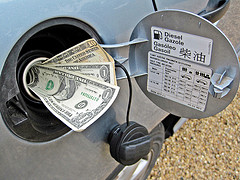 Is it time to upgrade your fleet fuel management system?
Is it time to upgrade your fleet fuel management system?
Perhaps you originally made a conscious effort to focus on monitoring and improving driver behavior as a way to gain control over fuel consumption. But now you have that in hand, and you realize increased automation can help you control your fuel inventory and even improve your vehicle maintenance program.
Or maybe you’re still waiting to bring this technology into your business. In that case, you’re looking at upgrading your entire operation by making a dramatic switch. The factors involved in deciding whether or not to make this move are the same as those managers use to upgrade an existing system. There are lots of reasons you might want upgrade, including:
- The developer has made changes to the system that could benefit your operation.
- You’ve had the system for a while and there are new modules you want to add, perhaps to increase automation or add a new control feature.
- Your business has grown or changed and there are additional aspects of fuel management which have now become more important for your operation. Maybe you need to accommodate more vehicles, or different types of vehicles, or more fueling locations.
Automation is key.
When you can get more done, faster, you’re making better use of personnel time and vehicle time, too. When your work is more accurate and more complete, you can make better decisions. And when you have fewer anomalies to track down or worry about, you’re able to focus on mission-critical activities that build your business and help you remain competitive.
Automation can improve virtually every part of your accounting and management. For example, the right fuel management components can vastly improve your preventive maintenance efforts, saving time and money on service and labor and reducing costly down time. If upgrading your fleet fuel management system can bring you additional automation, it’s probably a smart investment. Check out this article to learn more about how a fleet fuel management system will create a return on your investment.
If you originally purchased a system that only addresses one or a few aspects of your business, such as the driving improvements we already mentioned, then you may want to upgrade to a more powerful, more capable system.
One advantage to purchasing a comprehensive fleet fuel management system in the first place is that it isupgradable, to serve you now and also down the road. You may not need all the bells and whistles right from the outset, but they’re available when you need them. And you can incorporate them easily, with least confusion or disruption. A system that is limited may seem like a smart investment because it’s cheaper, but what will you do when you outgrow it?
Modular systems make it easy to upgrade, and you can plan strategically to do that. For instance, if you’re using the basic FuelMaster PROKEES® system, you may have started out using it for a card lock operation, but now you need to add credit card capture or you want better control over which fuel is dispensed into which vehicles. You can upgrade by adding AIM2 (Automotive Information Module) devices that provide entirely hands-free data gathering and other benefits.
You could do that incrementally — one vehicle at a time — or budget the additional cost as part of the capital expense for new vehicle purchases. That’s important, because for most operations, the decision to upgrade their fleet fuel management system comes down to money. Whether you’re a private business or a government entity, you have to make smart buying decisions.
The bottom line is your bottom line, so do the math. Simply compare the cost of upgrading your fleet fuel management system (or adopting one, if you’re still doing without) to the additional benefits that will accrue to your operation. Remember that total cost of ownership is a multi-year proposition. If the numbers make sense, it’s time for an upgrade.
